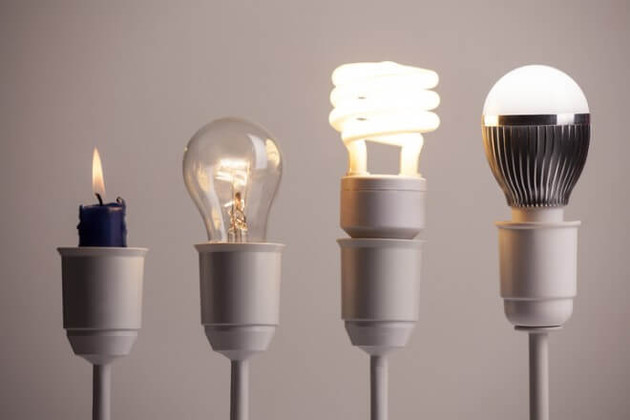Do LED Light Bulbs Attract Fewer Insects?
Posted by Birddog Lighting on Apr 29th 2017
In a contest for the best energy-saving light source, LED light bulbs would certainly steal the spotlight. Thanks to their energy efficiency, longevity, quality of light, and wide range of applications, LEDs are set to become the future of the light bulb.
However, beyond whether or not LED lights will save you energy, there’s another question many people want answered: Do LED light bulbs attract fewer insects?
Nobody likes to have bugs swarming around their lighting. This is not only annoying, but can also leave a big mess for you to clean up if the insects get inside the light fixture.
What is even more concerning to many people is the danger of being exposed to diseases by the insects attracted to their light bulbs.
In fact, every year over one million people die from mosquito-borne diseases.
Maybe that’s why many people are looking to LED light bulbs to solve their insect problems.
A quick Google query reveals that many people have asked whether LED light bulbs attract fewer insects. Recent research suggests that LED lighting attract significantly fewer insects than regular bulbs.
All these conflicting opinions can be confusing.
Allow us to shed some light on the matter!
What Science Has to Say about LED Light Bulbs and Insects
In a study conducted in England, researchers compared the number of flies that visited 18 sites where they had set up either LEDs, CFLs, or traditional incandescent lights.
The study found 80% percent of the flies that visited the test sites went straight to the regular incandescent bulbs. But get this — only 2-3% of the flies visited the LED bulbs.
Crazy, right?
Based on these results, the answer to the question “Do LED light bulbs attract fewer insects?” is a resounding yes.
And when you think about what draws insects to light in the first place, it’s not surprising that LED lights don’t attract as many insects as regular bulbs.
Insects swarm around light fixtures because they are attracted to the light bulb’s warmth and the wavelength, or color, of light. Because LED lights are designed differently, most insects prefer other light sources to LEDs.
LEDs don’t produce as much heat as traditional light bulbs.
LED bulbs release very little heat. In fact, LEDs only get up to 107 degrees Fahrenheit. That’s really quite cool in comparison to CFLs and incandescent light bulbs, which can get between 167 and 327 degrees.
The reason why traditional bulbs give off so much more heat has to do with the way they generate light. Incandescent bulbs produce light by running electric current through a filament that’s made of tungsten.
During this process, more energy is released in the form of heat than in the form of visible light. In fact, only 10% of the light that incandescent bulbs produce actually falls in the visible spectrum. So that means that 90% of the energy is being released as heat.
Since LEDs use a diode rather than a filament. So they’re using more energy to generate light than is being released as heat.
The first generation of LED light bulbs only produced infrared light, which isn’t visible to the human eye. But since, scientists have engineered visible light-emitting diodes, or VLEDs. That’s one reason why LED light bulbs and LED TVs have been gaining attention in recent years.
With warmer options like CFLs and incandescent lights, it’s no wonder that heat-seeking insects like mosquitoes and cockroaches tend to prefer these sources rather than LEDs.
Here’s another reason why insects prefer incandescent and CFL bulbs to LEDs.
Scientists are developing LED light bulbs with colors that insects aren’t attracted to.
Researchers have shown that most insects prefer colors on the blue side of the spectrum. In fact, one study suggests that 60-70% of insects prefer blue, violet, and ultraviolet light wavelengths.
When LED light bulbs first started hitting the market, they were made to emit mostly blue wavelengths. So even though LEDs didn’t give off as much heat, they still could still attract some insects based on their preference for blue and UV lights.
However, more recently, LEDs are being customized to emit wavelengths that aren’t as attractive to bugs. In fact, one design that was tested in 2015 showed that 20% fewer insects were drawn to the LEDs that had been designed to block blue lights.
When you combine this customization with the fact that LEDs already don’t emit much UV light, you’ve got a light source that most insects won’t want anything to do with.
The Verdict on LED Light Bulbs
The answer to the buzzing question “Do LED light bulbs attract fewer insects?” we say, definitely!
The low heat emitted is enough to keep most bugs from swarming around LED lights. On top of that, with the new developments in LED light bulb colors, LED light sources are set to become the least attractive bulbs out there.
So besides being a green energy source, LEDs are also much less likely to draw disease-carrying insects onto your porch or into your house. Say goodbye to pesky mosquitoes, flies, cockroaches, and moths!
You have plenty of options when it comes to light sources, but it’s clear that LED light bulbs are your best bet for preventing insects from entering your home. Given all the benefits of LEDs, it’s more than likely that these awesome light bulbs will take center stage in the coming years.
If you have any more questions about LED light bulbs, be sure to check out our LED and Incandescent FAQ page. Please feel free to contact us! We’re happy to talk with you on the phone or on our live chat.



